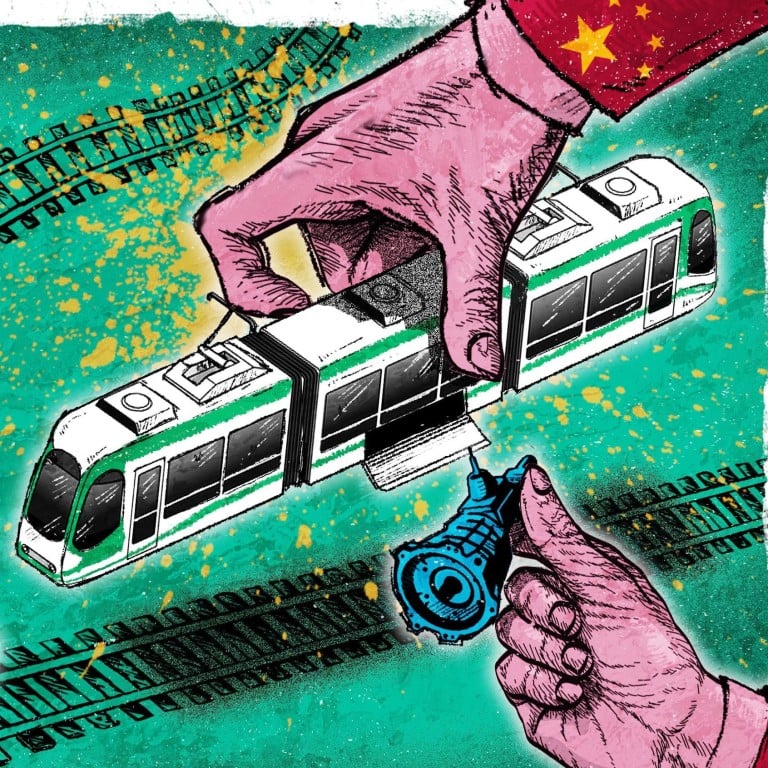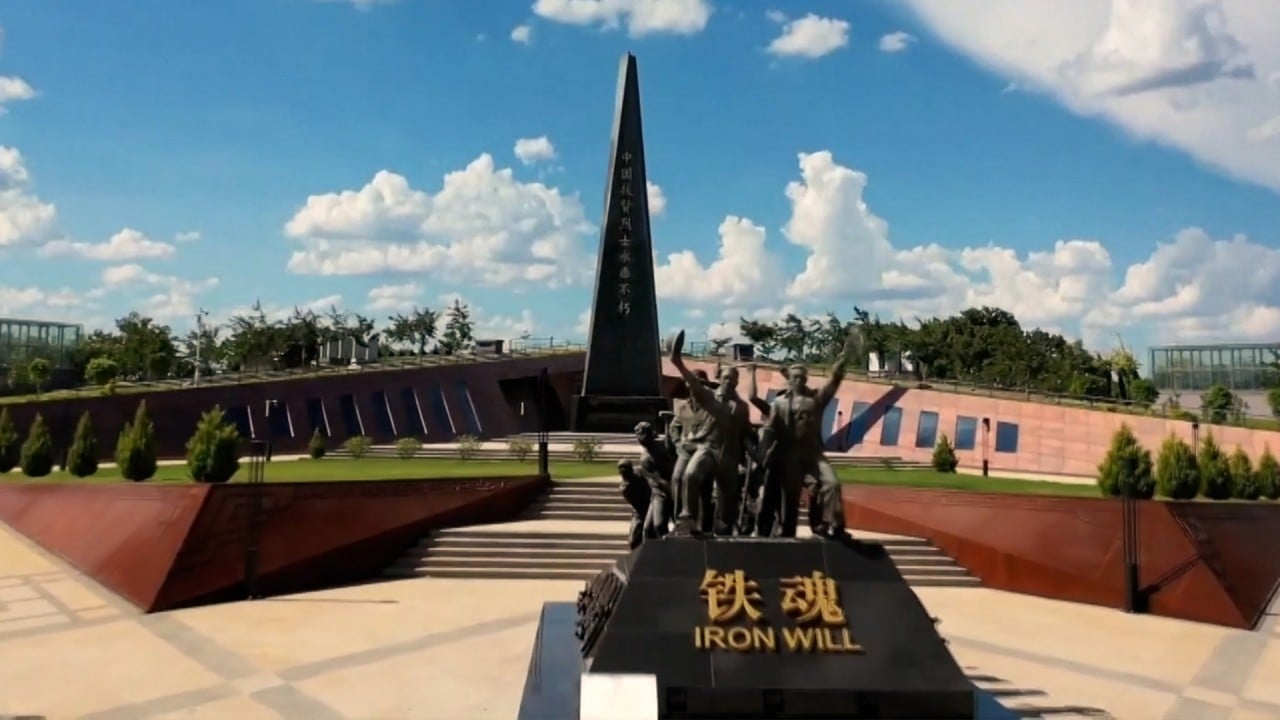
China hands a lifeline to Ethiopian capital’s crumbling light rail
- With more than half of its rolling stock out of action, Addis Ababa’s affordable transport system is in desperate need of spare parts
- Beijing has agreed to help but observers say the problems go deeper and are shared by other Chinese-financed railways in Africa
The help is in accordance with the economic and technical cooperation agreement signed by China and Ethiopia two years ago, according to the Ethiopian finance ministry.
The lack of spare parts has left 23 of the light rail’s 40 trams inoperable. At the same time, low ticket prices, overcrowded and limited services, along with electricity issues, have made it difficult to generate enough income to cover operational costs.
Ethiopia’s railway officials admitted last month that years of inadequate maintenance have left half of the network’s rolling stock unusable, amid growing criticism from the West that China has funded and built “white elephants” in Africa.
China denies creating ‘debt trap’ for African countries
In late January, the head of the Addis Ababa transport bureau Mitku Asmare told Ethiopia-based news publication The Reporter that the light rail, which has been operating since November 2015, would need about US$60 million for repairs.
According to The Reporter, the light rail generated revenue of US$11.1 million in its first four years but cost US$154 million to operate, putting it behind in scheduled repayments of the loans used to build it.
Since the revenue generated by the sale of tickets cannot pay for the operating costs and maintenance of the trains, the Addis Ababa administration has been covering the shortfall.
Observers said the Ethiopian light rail, in common with other Chinese-funded railway projects, was bound to struggle because of a lack of technical capacity and the finances to carry out adequate maintenance. Ethiopia is in short supply of both.
The capital’s 32km (20-mile) light rail network, which connects the Addis metropolis with its sprawling suburbs, was built by China Railway Eryuan Engineering Group (CREEC), a subsidiary of China Railway Group, and funded by a US$475 million loan from China Exim Bank.

Yunnan Chen, a senior research officer at the London-based Overseas Development Institute think tank, said the light rail, with its relatively low cost for ordinary people, is a hugely popular mode of transport in Addis Ababa.
Chen said the price of the ticket was mandated from the outset to be something like 2 birr (3 US cents) “but services don’t run often enough because the government was only able to purchase so many rolling stock at the beginning, plus you need sufficient drivers trained”.
“This means the wear and tear on the rolling stock is huge – people shove in, carriages are full, doors get damaged and won’t shut properly. But the Ethiopian Railway Corporation (ERC) doesn’t have the funds or the manpower to fully maintain or replace them,” she said.
“The ticket price is not high enough to cover costs, and it was never meant to – this is a public good infrastructure and not profit-making.”
Chen said the Chinese rail companies CREC and Shenzhen Metro had done “a pretty decent job” in building technical capacity during the time they were operating there, but embedding that knowledge and capacity was a long-term challenge.
They had trained local drivers and tried to build the capacity among local staff to take over the service, but the knowledge of how to carry out repairs and maintenance was useless without the right equipment and spare parts, she said.
“They have tried in the past to push the companies to do more, with some mixed success when the embassy puts pressure on the Chinese SOEs, but this is not a long-term sustainable solution.”
How the political seeds of China’s growing Africa ties were planted long ago
Chen said Ethiopia also lacks the industrial ecosystem to manufacture all the specialist parts it needs. “This is Ethiopia’s first railway project. Nearly everything has to be imported from China,” she said.
“I imagine Covid and China’s lockdowns also might have contributed to these shortages.”
Adding to the problem, the ERC has been unable to buy the parts it needs to fix the rolling stock since 2017, because of foreign exchange struggles as the country deals with a financial crunch.
Ethiopia has been struggling to service its loans, forcing it to seek debt relief from its foreign lenders, including China, which is one of its major creditors.
The country’s financial woes were worsened by the civil war which erupted in November 2020 after the leftist Tigray People’s Liberation Front (TPLF) was accused of attacking a military base.
In the bloody conflict which followed, the US cut aid and suspended Ethiopia from the Africa Growth and Opportunity Act – which provides African countries with duty-free access to US markets – over alleged human rights violations by Ethiopian forces.
Chinese envoy to Horn of Africa rejects foreign intervention
China has been a key supporter of the Ethiopian government, partly because of the country’s geopolitical significance as the seat of the African Union, as well as its strategic location in the Horn of Africa.
In January, Beijing’s newly appointed Foreign Minister Qin Gang made Addis Ababa his first stop – at the start of a week-long tour of five African nations – and pledged China’s support for reconstruction efforts in the country’s northern region devastated by the Tigray war.
In a meeting with Prime Minister Abiy Ahmed, Qin said Beijing was willing to expand cooperation in various fields and “encourage more Chinese companies to invest in Ethiopia and participate in the reconstruction process”.
Qin said China had sent food, vaccines and other humanitarian aid to help people in war-torn areas. “We will continue to do so and will be actively involved in rebuilding conflict-affected areas.”
China pledges support for reconstruction efforts in war-torn Ethiopia
During Qin’s visit – two months after a peace agreement ended hostilities in Tigray – China also agreed to partially forgive an undisclosed amount of Ethiopia’s debt.
Ethiopia has been a key destination for Chinese capital in the past decade, which has funded the US$4.5 billion Addis Ababa-Djibouti railway, along with other projects like the capital’s Riverside Green Development, in addition to the light rail network.
According to the database of Chinese loans to Africa at Boston University’s Global Development Policy Centre, China pledged US$13.7 billion in loans to Ethiopia between 2000 and 2020 to build roads, power dams and railways.
The Addis Ababa–Djibouti railway, a major Belt and Road Initiative project funded by China Exim Bank, faces similar struggles to the capital’s light rail network’s financial and operational issues.
1 year on, EU alternative to China’s belt and road fails to deliver
In Chen’s view, the problems of buying equipment and spare parts have been caused by Ethiopia’s foreign exchange crisis, with technical capacity building facing a similar challenge.
“However, I would imagine the trunk line railway does not suffer as much as the Addis light rail in terms of wear and tear and usage,” she said.
This is because it runs on a more infrequent schedule, and the trains “are a bit sturdier than the light rail rolling stock and locomotives”.
Yun Sun, head of the Stimson Centre’s China programme in Washington, said the issue with Ethiopia’s light rail project is that maintenance and systems upgrades require funding and support, which Ethiopia is not able to afford.
“This is the issue of commercial viability of major infrastructure projects China builds in Africa – that the projects have to be profitable enough to generate resources for [their] continued operation.”
“We have seen similar difficulties from the Addis-Djibouti railway, as well as the Mombasa- Nairobi railway,” Sun said.




